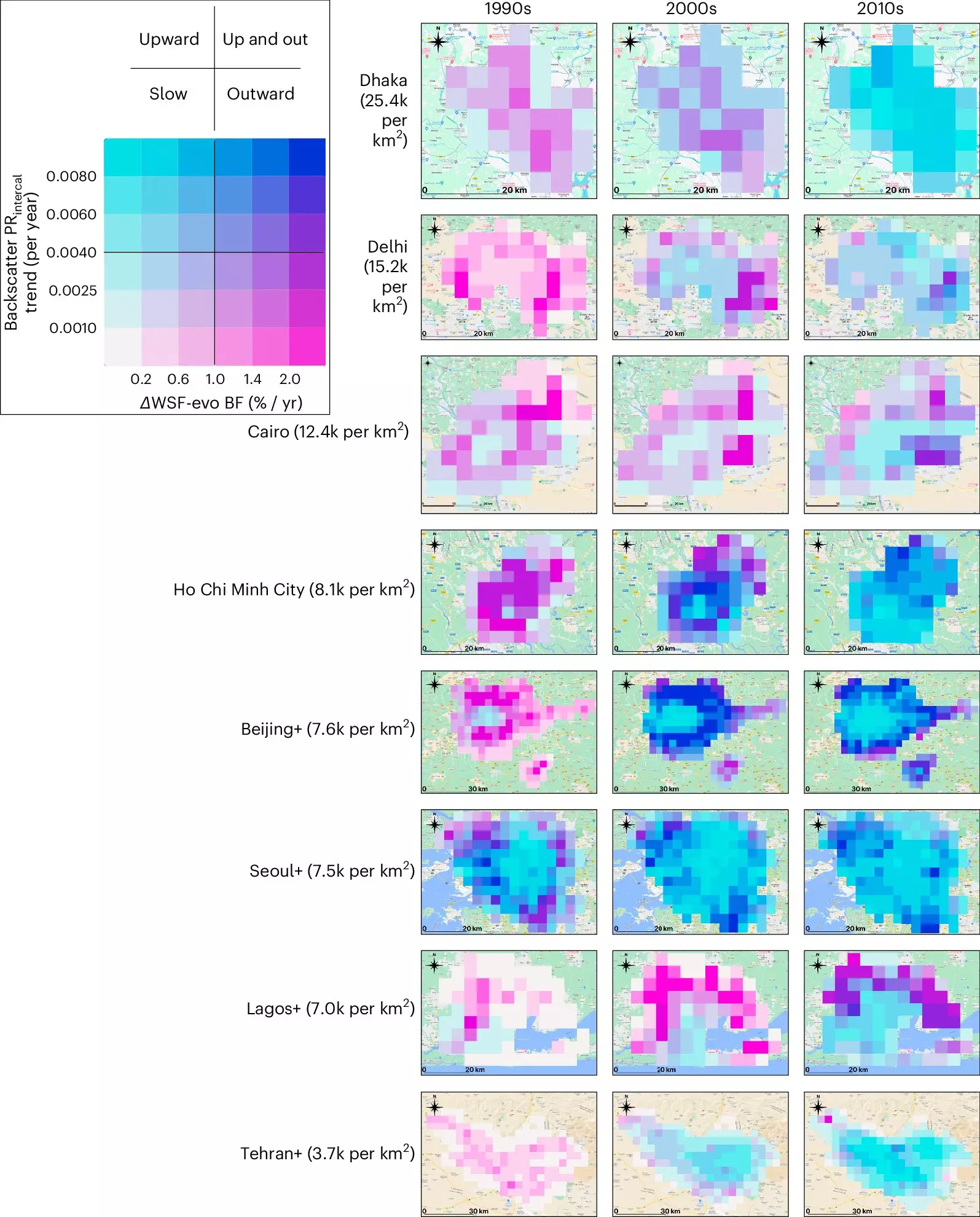In a recent study published in the journal Nature Cities, a collaborative team of Earth scientists, environmental engineers, and geomaticists discovered a fascinating trend in urban development. Rather than expanding outward, modern cities around the world are experiencing a significant increase in vertical growth. This research is particularly timely, given the ongoing migration of people from rural areas to urban centers. By 2030, it is projected that 60% of the global population will reside in cities, making it crucial for city planners to adapt to these changing demographics.
The research team analyzed two types of satellite data spanning over 1,500 cities worldwide from the 1990s to the 2010s. One type of data allowed for the measurement of a city’s footprint in two dimensions, providing insight into its size. The other type, which utilized microwaves, enabled the researchers to analyze city growth in three dimensions, considering the upward expansion facilitated by the construction of skyscrapers. Through this comprehensive analysis, the team uncovered a notable shift in the growth patterns of modern cities.
The study revealed a strong correlation between city growth and economic development, with most cities transitioning from outward expansion to upward growth. This shift towards vertical development signifies a more efficient utilization of limited space, as buildings are constructed taller rather than spreading outwards. While this trend was consistent across the majority of cities studied, there were notable exceptions in regions such as Africa, China, and Southeast Asia, where outward growth continued to outpace vertical expansion.
The findings of this study have significant implications for urban planners tasked with anticipating future population growth and resource allocation. By understanding the changing dynamics of modern city growth, planners can make more informed decisions regarding infrastructure development, housing initiatives, and public services. As cities continue to evolve and expand, it is essential to adapt urban planning strategies to accommodate the increasing vertical nature of urban landscapes.
The research conducted by this multi-disciplinary team sheds light on the shifting paradigm of urban development towards vertical growth. By analyzing satellite data and tracking city expansion trends over time, the researchers provide valuable insights that can inform decision-making in urban planning. As we look towards a future where the majority of the global population resides in cities, understanding the dynamics of modern city growth is paramount for creating sustainable and livable urban environments.


Leave a Reply